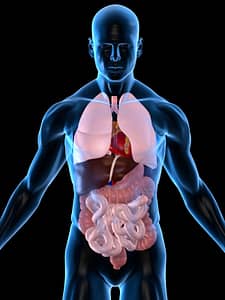 Visceral pain relates to pain in the organs of the body. So it could be the chest, or more likely, the abdomen or the pelvis. It is somewhat unlike other pain syndromes. In a sense that visceral pain activates the autonomic nervous system, specifically the parasympathetic nervous system, the sympathetic nervous system, or both. Which is why a lot of patients who have visceral pain also have associated nausea, vomiting and sweating. More women than men suffer from visceral pain. More specifically from chronic pelvic pain; pain that can come from the bladder, the uterus, the fallopian tubes, the ovaries. Or in men, this pain can emanate from the prostate.
Visceral pain relates to pain in the organs of the body. So it could be the chest, or more likely, the abdomen or the pelvis. It is somewhat unlike other pain syndromes. In a sense that visceral pain activates the autonomic nervous system, specifically the parasympathetic nervous system, the sympathetic nervous system, or both. Which is why a lot of patients who have visceral pain also have associated nausea, vomiting and sweating. More women than men suffer from visceral pain. More specifically from chronic pelvic pain; pain that can come from the bladder, the uterus, the fallopian tubes, the ovaries. Or in men, this pain can emanate from the prostate.
If someone has chronic pelvic pain, he or she may also have concurrent fibromyalgia or concurrent interstitial cystitis, so there’s a lot of overlap among the chronic visceral pain syndromes. Many patients who have visceral pain and specifically chronic pelvic pain also have concurrent depression and anxiety. It can lead to a lot of familial discord and sexual difficulties among partners.
Where is it Located?
Visceral pain can be hard to localize because of something called viscerosomatic convergence. Think of the nerves that would start from the small intestine, travel from the small intestine all the way to the spinal cord, say at level T10. Those are called visceral afferent fibers. Well, there are cutaneous nerve fibers that will also start, say, from the skin and travel from the skin to the same spinal cord segment, say T10. Those nerves that travel from the skin converge at the same level in the same location as the nerves that travel from the gut and end up in the spinal cord. That’s called the viscerosomatic convergence of nerves and is why patients will, say for example, they have belly pain and at the same time, they may feel like they have referred pain in the low back.
By: Paul J. Christo
07/25/2016
Continue reading the full article from Pain Week here
 Skip to content
Skip to content
